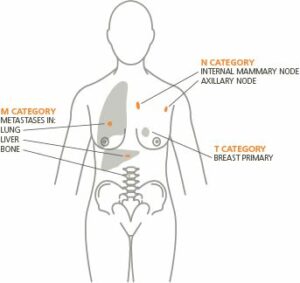Cancer Staging
Why Cancer Needs To Be Staged?
To treat a cancer, it’s imperative that we need to know how far it has spread. Based on the degree of its spread in the organ concerned, its surrounding area and to other distant parts of the body, the cancer is staged. Each stage has a specific treatment method to achieve optimal results. Hence staging is a must before starting treatment.
How Many Cancer Stages Are There?
Generally, cancer is divided into 4 stages. Generally, Stage 1 and 2 indicate early stage cancer where it is still confined to the organ concerned. Stage 4 denotes a disease that has spread to other parts of the body i.e. liver, lungs, bone and brain.
How Do We Come To Know Which Stage The Cancer Is?
The patient will be advised to undergo imaging investigations like CT scan, MRI scan or PET SCAN. These will help identify the spread of the disease.
Sometimes surgical procedures need to be carried out to rule out spread of small cancerous nodules to other parts as these small nodules may be missed by scans. E.g. Staging laparoscopy, thoracoscopy etc.
Are All Cancers Staged The Same Way?
NO.
The human body is made of a variety of cells. E.g. nerve cells, liver cells, muscle cells. Cancer arranging in different cells behave differently and respond differently to treatments. Hence cancer of each organ is staged differently.
Is There A Standard Of Staging Cancer?
American Joint Committee on Cancer (AJCC)/ International Union Against Cancer (UICC) classify the anatomic staging of cancer based on the size of a tumor and any spread to nearby tissue (T); the spread of the cancer to nearby lymph nodes (N); and the spread of cancer to other parts of the body (M). This is commonly referred to as TNM staging.
This staging is universally used and accepted.
There are certain other staging systems for specific tumors.

What Does Cancer Stage Indicate?
APPOINTMENT FORM
Related FAQ’s
Lymph Nodes And Cancer
Lymph nodes are small bean shaped structures that are a part of body’s immune system. There are hundreds of lymph nodes scattered in all areas of the body.
PET Scan
PET scan is the abbreviation for Positron Emission Tomography. It is an imaging procedure, similar to CT scan. However, in PET scan a special drug is used, that emits radiation (a radiotracer).
Chemoport In Cancer Treatment
Chemoport is a medical device that is implanted into the patient’s body (just under the skin of the chest, most commonly), primarily for chemotherapy. It has a small chamber
